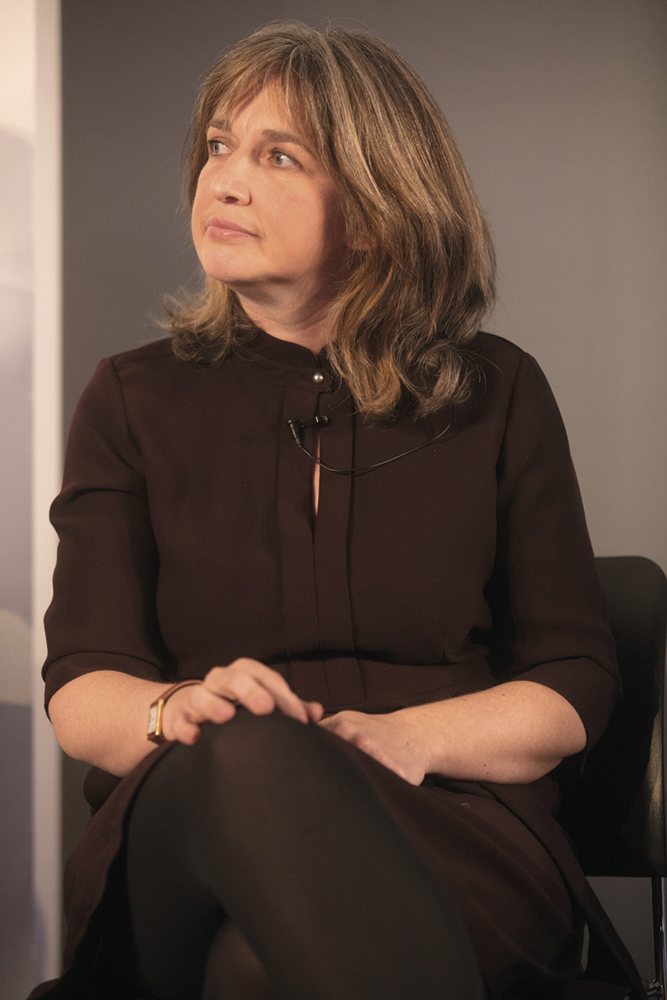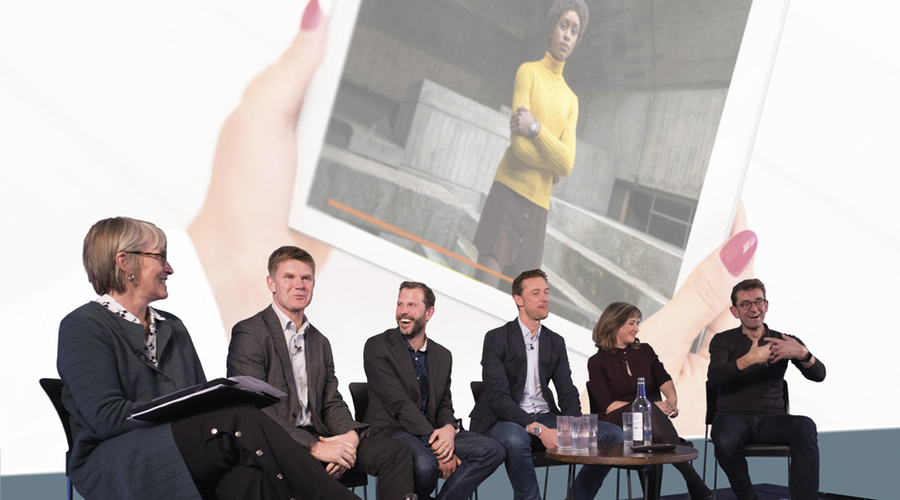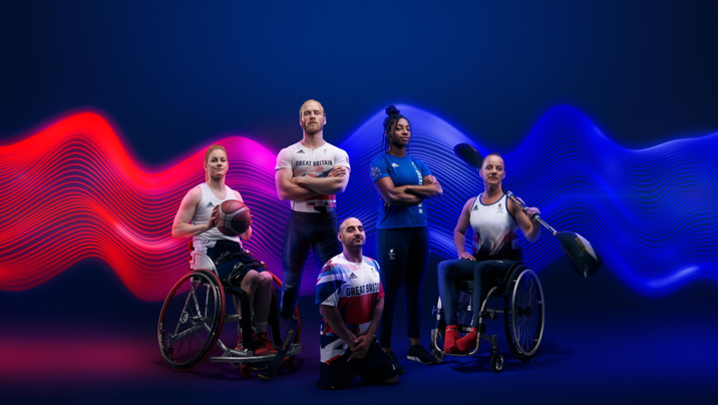Matthew Bell grapples with the complexities of measuring TV viewing across a multi-device landscape.
Television is trying to keep advertisers happy and out of the clutches of its online competitors. But, with the growth of streaming services such as Netflix, totting up who watches TV, and when and where, is becoming a complicated business.
This is the key data that advertisers want and which ratings body Barb is doing its utmost to provide, according to CEO Justin Sampson. He was part of a panel at an RTS early-evening event that drew a capacity crowd to The Hospital Club in late October.
The other panellists, Sky Media Managing Director John Litster included, were encouraged by the strides Barb has been making to keep pace with modern viewing habits.
“From an advertising sales perspective, Barb is and always will be our currency,” he said.
Sky also collects its own audience data from set-top boxes, which it can use to hone its targeted advertising.
Channel 4 harvests audience information from the 18 million registered users of its video-on-demand (VoD) platform, All 4, more than half of whom are in the key – for advertisers – 16-34 age group.
“We get very granular information about what they’re watching [and] on which devices,” revealed Sarah Rose, chief consumer and strategy officer at Channel 4.
Barb, through Project Dovetail, has caught up with the broadcasters and is now releasing multiple-screen figures for TV sets, tablets, PCs and smartphones across the TV landscape.
“The truisms that Dovetail has now enabled the whole market to see are ones we’ve known for some time, namely that most [young viewers], when they can, watch [programmes] on the big screen. Everyone imagines teenagers in the bedroom watching on smartphones and tablets – [but that number] is tiny,” said Rose

She added: “We are relieved that the Dovetail numbers and the numbers we have from our own users match – they vindicate [Barb’s] panel measuring system.” Dovetail, she said, “is revolutionising how broadcasters operate. We commission shows differently now because we see how they’re consumed on different platforms.”
“Barb is in a good place,” suggested Litster. “Eighteen months ago, we were struggling, as a collective, to get things moving. But I think that there’s a sense of initiative now, and Dovetail actually working is something we’re all excited about.”
Despite the popularity of multi-platform and catch-up TV, however, old-fashioned audience measurement still has its place. “Overnight [ratings] still tell you whether you have a hit,” argued Rose.
She continued: “Things that are top 10 in VoD viewing tend to be top 10 in linear, because success travels, and it’s nearly always on the main channels in the same order. Without wanting to sound like a terrestrial dinosaur, TV is proving remarkably resilient. [Project] Dovetail is game-changing but, still, 90%-plus of the viewing it tracks is linear.”
But not everything on the horizon is rosy from Barb’s perspective. The increase in unidentified viewing – content on services that Barb is unable to measure – offers a challenge both to the ratings body and broadcasters (see box below).
And the amount of unidentified viewing has increased hugely in recent years with the growth of the US streaming services. Pre-Netflix, the level of unidentified viewing was far lower and mainly attributed to people using their TV sets for gaming or watching DVDs.
“There’s a large amount of commercial viewing in television that is not currently captured [in the ratings],” said Rich Astley, chief product officer at Finecast.
His company delivers addressable advertising across VoD, linear and live-streaming platforms. “In the minds of a lot of our marketers, TV as an advertising medium is currently under-represented.”
He added: “TV is much bigger than [its] current representation from linear viewing – there’s an opportunity to either bring investment back into TV or [bring in] new investment.
“There’s a really strong future in television and the experience of watching TV has never been as good as it is today.”
But Astley warned: “As an advertising medium, it’s got a lot of work to catch up on. We [need to] prescribe the right value to TV as an advertising medium for the future.”
For agencies and brands looking to advertise on television, “there’s a bit of frustration out there”, admitted Matt Hill, research and planning director at Thinkbox, the marketing body for UK commercial TV.
“The one thing that everyone is looking for is to get a proper gauge of the incremental reach across linear TV and broadcast VoD, and get an idea of [how] their campaigns are being delivered.” Barb is addressing this shortfall in its data in the second stage of Project Dovetail.
TV executives worry that advertising revenue is increasingly being lost to social media and online platforms, but Hill offered some reassurance. “TV does a job that those other channels cannot do,” he said, emphasising the “premium content” that television offers.
Barb’s new, multiple-screen ratings, said Astley, were hugely useful. For Killing Eve, they “are telling us that there is a huge amount of multi-platform, pre- and post-broadcast viewing”.
But only up to a point. “The critical piece that’s missing is commercial measurement – that is, whether an ad viewed in that content is [what] is ultimately going to determine budget allocation for an advertiser. We can’t do that today [for non-linear TV],” he said.
Astley added: “[Advertisers] are pulling money out [of TV] – that’s been happening for the past few years. What do we need to do to fix that? We need to fix commercial measurement. We’ve got to address some of the changes in viewing consumption that we’re seeing and convince advertisers to bring budget back to TV.”
Nevertheless, there were plenty of reasons to be cheerful about television’s future relationship with advertising. “I still believe in the brand-building power of TV,” said Litster.
“Commercial TV, and TV generally, has had a really successful time of it this year in terms of delivering big audiences.”
The Sky Media chief added that targeted advertising is coming on apace: “We’ve had loads of success with things like local car dealers and garden centres, which can advertise at a postcode level. A car dealer can advertise within four miles of its dealership, supporting big-brand advertising for particular models. We need to do more of that.”
“It’s a really exciting time,” concluded Thinkbox’s Matt Hill. “The premium environment that TV offers, coming together with all the benefits that you get from the online world and measurement, is a crucial part of that. I think we’re heading towards a really good place.”
The early-evening event ‘Who is watching? The challenge of digital TV measurement’ was held at The Hospital Club in central London on 24 October. The event was chaired by journalist Kate Bulkley and produced by Terry Marsh and Vicky Fairclough.
Barb’s Project Dovetail
The television ratings body, Barb, maintains a panel of 5,300 homes that reflect TV viewing across the country, to produce audience figures daily.
In September, it launched multiple-screen programme ratings that measure audiences on TV sets, tablets, PCs and smartphones. These figures are generated by a software code embedded in broadcasters’ video-on-demand (VoD) services across the different online platforms.
A process called ‘Dovetail Fusion’ combines the panel’s viewing data and the device-based information to produce multiple-screen programme audience figures.
This new measurement is a key part of Barb’s Project Dovetail, which launched in 2013 in recognition of changing UK viewing habits.
In the next stage of the project, concerned with multiple-screen reach and time spent viewing, it will report the extent to which tablets and PCs increase the number of viewers and average weekly viewing time for Barb-reported channels. Finally, the ratings body plans to report on multiple-screen advertising campaign performance.
‘We have to take a whole industry along with us, with a measurement that everybody believes to be right,’ said Barb CEO Justin Sampson.
‘In an ideal world, I’d have the broadcasters drilled like a troop of the North Korean army in Pyongyang, synchronised and moving at speed, but that’s not going to happen.
‘We have to avoid the trap that the Spanish Armada fell into, which was to sail at the speed of the slowest ship – and it didn’t do very well. So, we’re trying to find a pace that is somewhere between those two.’
The modern TV audience
Barb CEO Justin Sampson used the audience for hit BBC One thriller Killing Eve to illustrate how TV viewing habits have changed. The entire series was made available to viewers on iPlayer following the transmission of episode 1 on 15 September.
He revealed that 3.87 million people watched episode 4 before it was broadcast, 2.26 million saw it live on 6 October and 2.48 million watched it during the following week. The total audience was 8.6 million, of whom 90% watched on TV sets, the remainder on other devices.
Live events, such as England’s World Cup semi-final against Croatia, are watched overwhelmingly on TV sets. It drew a television audience of 20.7 million and only 337,000 viewers on tablets, PCs and smartphones.
Another summer programme, ITV2 reality show Love Island, however, made a bigger splash in the online and mobile world.
Using the 15 July episode as an example, Sampson said: ‘The average audience on tablets, PCs and smartphones was not far off 1 million, which boosted the TV-set audience by close to 25%.’
Gaps in the measurement of TV viewing remain. ‘The rise of unidentified viewing is a big challenge for Barb,’ he admitted.
This year, on average, viewers have spent an average 47 minutes a day watching content on services that Barb is currently unable to measure. For young adults, who are less wedded to traditional TV, the figure rises to 69 minutes a day.
‘We know the TV set is on, but what’s being watched is not a Barb-reported channel,’ said Sampson. Unidentified viewing is growing and largely driven by audiences for Netflix, YouTube and Amazon services.
New measurement tools could help Barb to measure audiences for the new, over-the-top channels. Router meters, attached to a home wi-fi network, would allow the ratings body to monitor the viewing of streaming services.
Barb is currently testing a meter made by Kantar Media with its viewing panel. It is also building a panel with US audience measurement company Nielsen in the south of England ‘to test its capabilities with router meters and TV-set meters’.
Should Facebook and YouTube join in?
Barb does not collect viewer data from the US tech giants but, as Facebook and Google (via its subsidiary YouTube) produce more TV-quality programming, this omission feels increasingly significant, not least to advertisers. However, there is little agreement in the TV industry on how to measure such audiences.
At the RTS event, Barb CEO Justin Sampson issued an invitation: ‘Anyone who wants to meet and work with Barb – we’re happy to talk to them.’
From the audience, Google UK’s head of market insights, Jonny Protheroe, responded. ‘There is a will [at] Google for YouTube to be part of TV [joint industry] currencies around the world,’ he said, adding that discussions were most advanced in Germany where YouTube should soon be measured by the German equivalent of Barb.
Joint industry currencies (JICs) provide audience numbers and trading metrics for each advertising medium.
‘We need to agree as an industry what we want the currency to cover. I don’t think you can treat all platforms the same. They are different in the way people consume [content] and they are different in the type of data available, and measurement needs to reflect those differences.’
He warned that the ‘one-size-fits-all existing measurement structure’ was unsuitable. ‘[We need to be] represented appropriately and fairly.’
Finecast’s Rich Astley responded: ‘It’s great to hear – we’ve heard the appetite’s there. The demand is very much there [too] from advertisers and agencies to have everything in one view and in one measurement system, but the differences do need to be called out.
‘Is it professionally produced, long-form content or is it short-form, user-generated content? YouTube has some of both. Let’s have everything in the system, but clearly label it when it’s different.’
Facebook head of marketing science R&D for EMEA Alex North, who was also in the audience, said: ‘There’s definitely an interest on the Facebook side in adhering to the principles that Justin outlined in terms of audited, transparent, independently measured data. There’s a danger, though, of terminology here.’
He argued that YouTube is ‘TV-like; Facebook is even less TV-like, so should it sit within Barb?’ He added: ‘It’s not as simple as, “Flick a switch and you’re in Barb.’”
Thinkbox’s Matt Hill agreed with North: ‘[Just] because we’ve got lots of video formats springing up across different places, [it doesn’t mean] that they all need to be measured together in the same place, when, in fact, they’re really quite different types of video.’
Hill added: ‘The reality is that Barb is a measurement for premium, professionally produced, quality content in a quality environment and that should continue to be its remit.’
The panel chair, journalist Kate Bulkley, pointed out that Facebook is now producing more high-quality content, a view that Hill accepted.
‘If it is making professionally produced content on [VoD services] Facebook Watch and YouTube Red [now YouTube Premium], that is more legitimate because it’s quality content offering a similar ad-like experience to the rest of TV,’ he said. ‘But the rest of the services don’t, so therefore it shouldn’t really be considered on a like-for-like basis.
‘Where do you draw the line in terms of quality, professional, premium-quality content? It is a subjective measure. If you are an advertiser, you want to know where the valuable placements are that you can go.
‘There’s a danger that we get caught up in definitions – and what you decide is a premium environment, I might disagree with. How do we come together as an industry to decide these kinds of things?’
Astley suggested, provocatively: ‘You can start with Ofcom-regulated [services.].’ Currently, Facebook and Google – which argue that they are platforms, not publishers – are not regulated by Ofcom and therefore not subject to the same rules as UK broadcasters.
North replied: ‘So you think we should seek regulation?’
That, said Bulkley, as she ended the conversation, was ‘a whole different panel discussion’.






